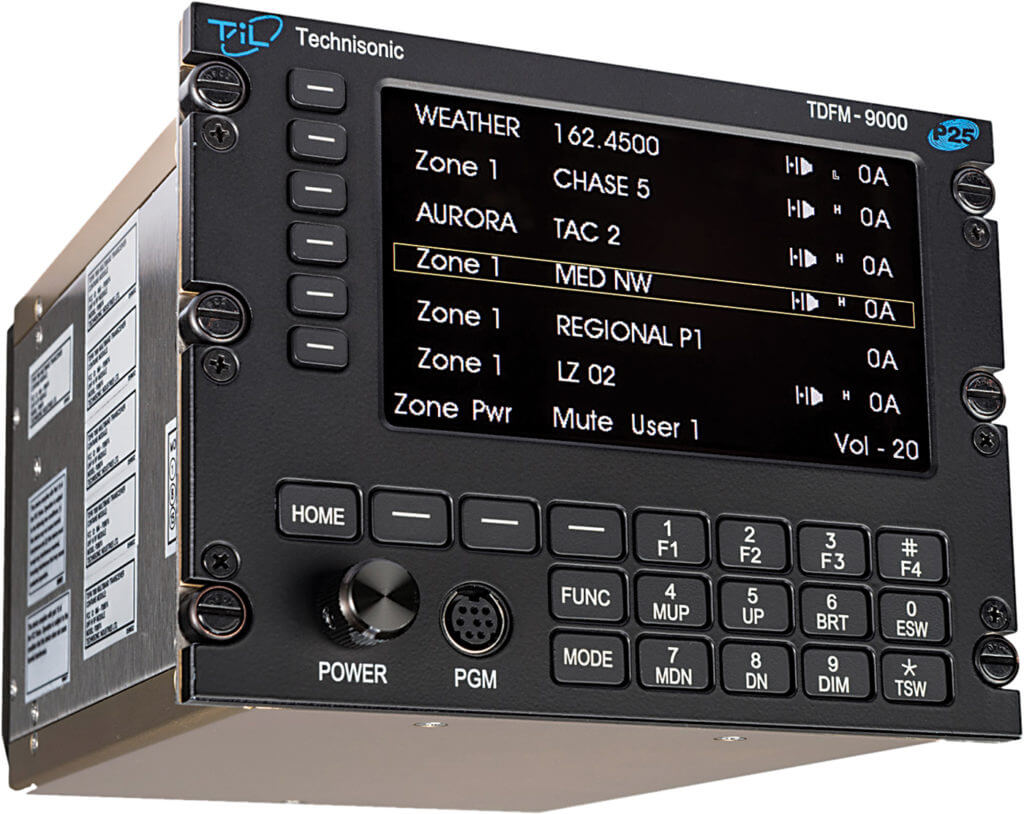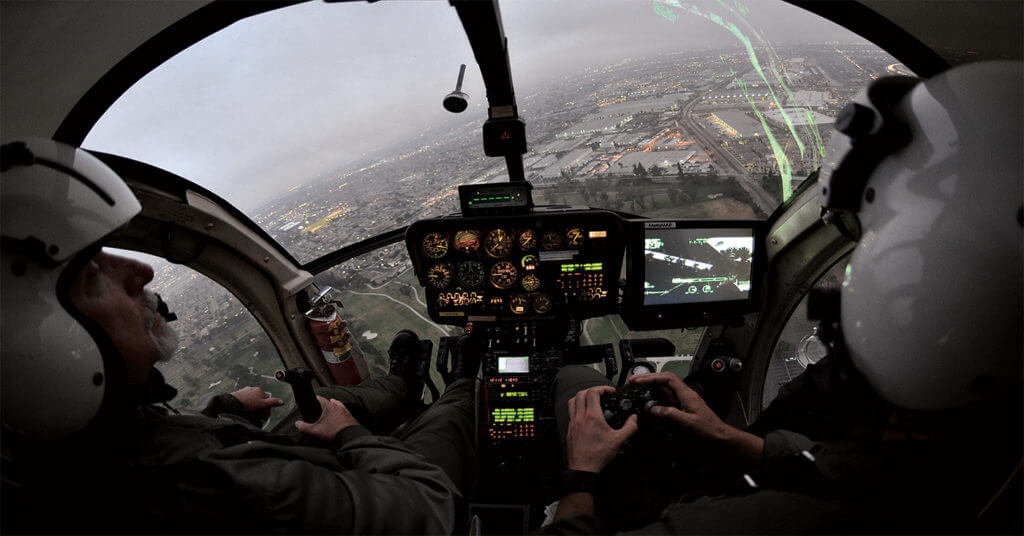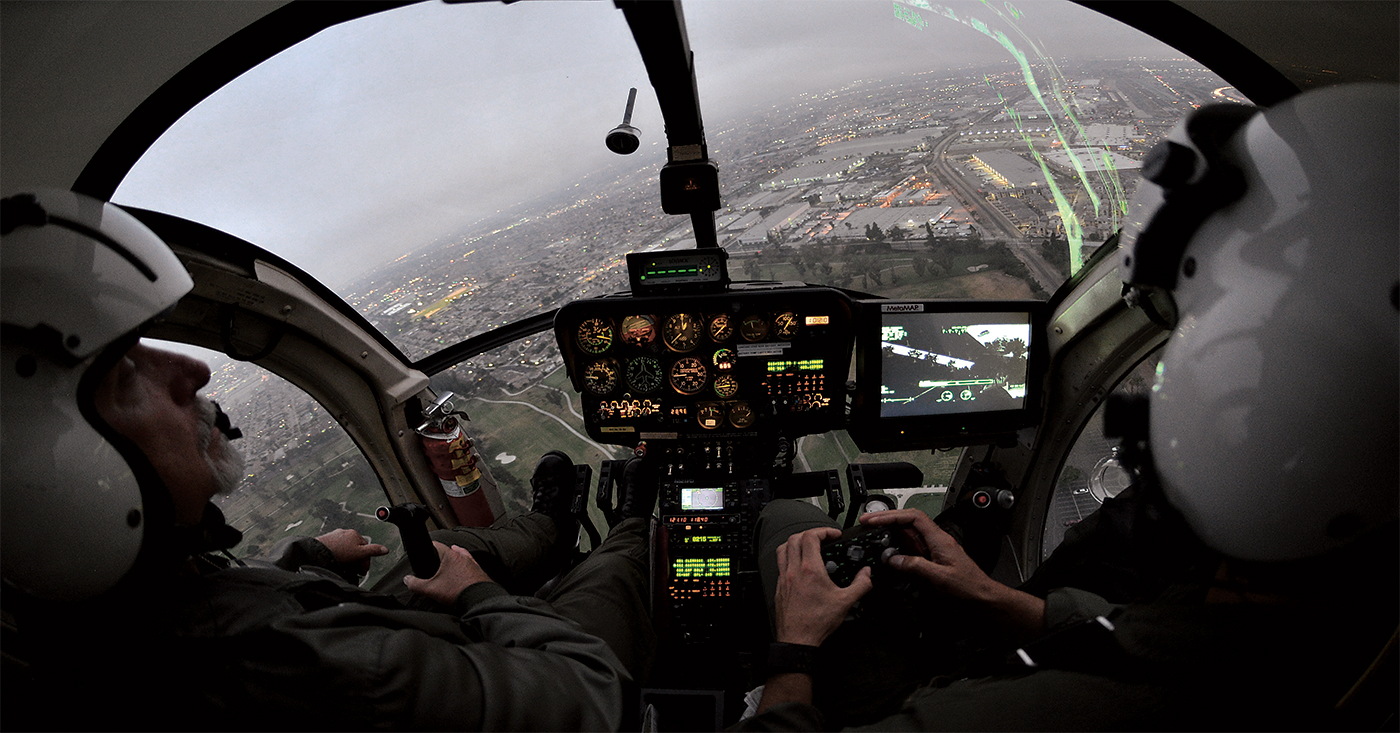Many companies claim to be client-focused, but few truly live their motto and benefit their customers the way Technisonic does.
“Our No. 1 goal is not to sell a radio,” said Jim Huddock, the company’s director of business development. “Our No. 1 goal is to help make a customer’s mission possible and make them happy with the equipment.”
A revolutionary new feature
From product development and industry partnerships, to sales and customer support, every part of the process at Technisonic is built around what the company can do to benefit its clients.
For example, take the pioneering Satellite Push-to-Talk (PTT) integration debuting on its TDFM-9100 transceiver at Heli-Expo 2018. Developed in partnership with Latitude Technologies (see p. 46) to meet the requests of air medical and search-and-rescue operators, PTT will transform mission communications.
 Said Huddock: “Based on Iridium technologies, this is an over-the-horizon, point-to-point type of communication.” That means when a storm like Hurricane Irma or Maria hits and the entire infrastructure is gone, PTT can still connect aircraft to ground crews, staging depots or even resources thousands of miles away–in mere moments. “This is an instant capability that has never been seen in aircraft and we’re very early adopters in bringing a solution like this to market.”
Said Huddock: “Based on Iridium technologies, this is an over-the-horizon, point-to-point type of communication.” That means when a storm like Hurricane Irma or Maria hits and the entire infrastructure is gone, PTT can still connect aircraft to ground crews, staging depots or even resources thousands of miles away–in mere moments. “This is an instant capability that has never been seen in aircraft and we’re very early adopters in bringing a solution like this to market.”
Simplified integration
Underpinning the Latitude Satellite and Push-to-Talk integration is Technisonic’s new multi-purpose communication port (MCP) capability, which was also developed in response to customer requests.
“We had a number of customers ask about this,” explained Huddock. “P25 [Project 25] meets the needs for dedicated missions, but when they step outside that dedicated mission and get put into a unique scenario, sometimes those communication protocols and services are not available.”
In these situations, operators said they needed a way to deal with non-P25 technologies. They could just put a handheld in the cockpit, but Huddock said that kind of a workaround isn’t ideal. “We wanted to give them a convenient way to integrate those technologies into their existing systems.”
With MCP, customers will not only be able to connect two additional external communication devices into their Technisonic radios, but they may also have the ability to control some of those devices. This provides an incredible increase in functionality and operability today, but also provides for scalability tomorrow, allowing the TDFM platform to integrate with future technologies as they’re created.
The MCP capability will be built into all new TDFM-9100s and can be added to existing units via a hardware upgrade. Later this year, MCP will also be available on other TDFM-9000 series radios.
It’s all about the customer
At Technisonic, listening to the customer starts very early in the process.
“When it comes to mission communication, capability does not equate to operability,” said Huddock. “That’s why we interview our customers prior to any sale, to determine not only what their technical needs are–but what their operational requirements are. We spend a lot of time with our customers’ crew members and radio shops to get to know them, so we can build the radio that meets their unique mission requirements.”
Afterwards, Technisonic continues to go above and beyond. “We take the uptime of our radios very seriously and we will jump through hoops to get an aircraft back in the air.” To that end, Technisonic has partnered with Dallas Avionics and made significant efforts to ensure knowledgeable support is available for its customers should they need it.
 “Communications experts like Scott Hurst, and partnerships with companies like ARS [Airborne Radio Support] and AMRCSS [Air Medical Radio Communications Systems Solutions] also help make that possible.”
“Communications experts like Scott Hurst, and partnerships with companies like ARS [Airborne Radio Support] and AMRCSS [Air Medical Radio Communications Systems Solutions] also help make that possible.”
When it comes to ongoing improvement, Technisonic takes that seriously, too. Not only does the company continue to develop its products, but updates are often field-deployable and free of charge. Said Huddock, “If we release new software that provides a new feature, we don’t charge for that. The customers can download it and use it if they want to. And, the features that we have built into new products can be turned on and off as needed.”
Technisonic’s products are very much the reverse of planned obsolescence. Even the company’s first radio, the TFM-138, continues to be supported.
“The only thing that stops us from supporting a product is if a critical component is no longer available.”
Additional innovations
Among the other exciting customer-driven innovations Technisonic will have on display at Heli-Expo 2018 is its all-new TDAP-611. This new audio panel has just received technical standard order (TSO) approval.
“It’s one of the only analog audio panels with eight COM positions, six NAVs and dual ICSes,” said Huddock. “First responders, emergency providers and law enforcement are being pushed for more radio communication capabilities, which pushes today’s analog audio panels beyond their limits. The TDAP-611 gives these operators the smooth, usable, NVG-compatible, next-generation system they need, at a cost that won’t break the bank.”









